Towering palms, bold swaths of color, and tropical plants have transformed the Chicago Botanic Garden into an exotic paradise this year for Brazil in the Garden.
To create the “Brazil effect,” floriculturist Tim Pollak and Andrew Bunting, the Garden’s assistant director and director of plant collections, drew from designs by renowned Brazilian landscape architect Roberto Burle Marx, who was known for his bold, modernist style.
We talked with Pollak and Bunting to learn how you can grow a Brazil-inspired tropical garden.
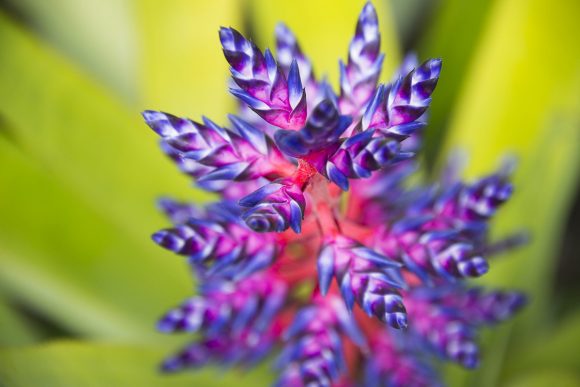
1. Find color in foliage
Burle Marx used bold, bright colors such as purple, orange, and green in his gardens. When planting your garden, Pollak recommended choosing foliage plants with various shades of green. Foliage tones are endless: silvers, blues, bronze, and burgundy. Foliage plants can also bring out the colors of flowers, and vice versa. For instance, if your garden’s foliage is silver, blue, and purple, pops of white flowers will enhance the foliage colors. “Remember,” Pollak said, “there are no rules when it comes to color.” Complementary or monochromatic schemes are subject to taste. But gardens can still be attractive without flowers. Instead, think of flowers as icing on the cake.
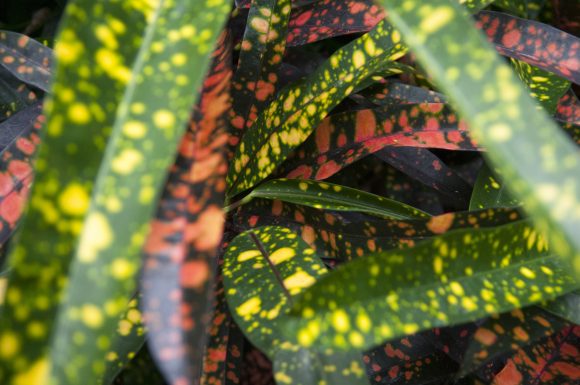
2. Use contrasting textures and shapes
Burle Marx was known for using large swaths of contrasting textures and forms in his landscape designs. Get the Burle Marx effect by choosing plants with various surfaces and shapes. For instance, Pollak said to think about the foliage of your plant—is it shiny or muted? Waxy or fuzzy? Is the venation (patterns of veins on the leaf) netted or in parallel lines? Are the shapes of the leaves long and thin, or short and wide? When shopping at your local garden center or nursery, follow Pollak’s trick: Lay your plants next to each other on your cart or on the floor. You’ll see which plants have different styles, which create a lush, biodiverse mood in your garden.
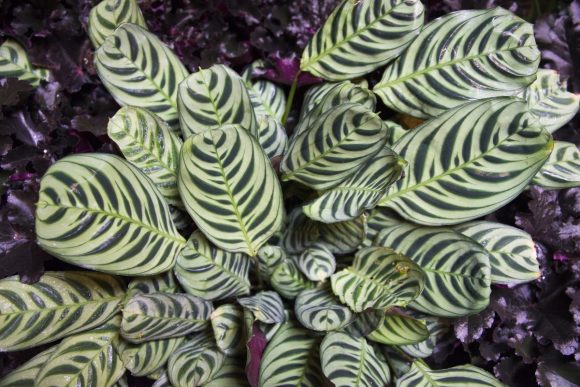
3. Think: thrillers, fillers, and spillers
Pollak and Bunting often advise gardeners to think “thrillers, fillers, and spillers” when planning their garden design. By using a combination of these kinds of plants, you can easily create a varied garden design. Here’s a breakdown of the three types:
- Thrillers: Tall plants are your “wow factors.” They’re dramatic, and stand out in your garden. Think of these plants as conversation starters. Pollak and Bunting recommend palms (Arecaceae), elephant ears (Colocasia), and cannas (Canna generalis) for Brazil-themed “thrillers.”
- Fillers: Medium-sized plants fill space in your garden. They can be interesting foliage plants or flowers, or flowers with interesting foliage. Pollak and Bunting recommend Persian shield (Strobilanthes dyerianus) and firecracker plants (Cuphea ignea) for Brazil-themed “fillers.”
- Spillers: Low plants spill out of a container, or trail along the foot of your garden bed. Pollak and Bunting recommend sweet potato plants (Ipomoea batata) and purple spiderwort (Tradescantia pallida) for Brazil-themed “spillers.”
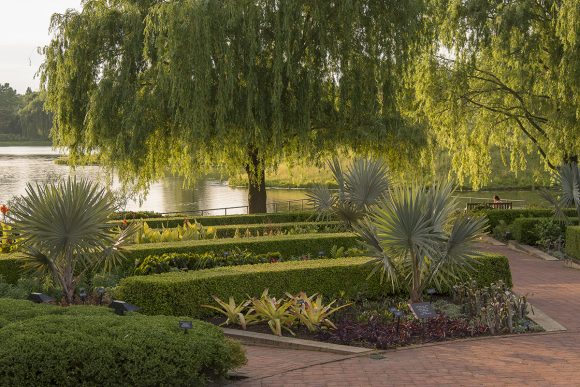
4. Create repetition for effect
When arriving at the Garden’s Visitor Center, you might imagine you’ve landed in Miami. Rows of swaying coconut palms, towers of bromeliads, and beds of elephant ears greet visitors as they walk through the Garden. The tropical illusion is deliberate: We repeated similar plants in our beds to broaden the Garden’s designs, making small spaces look larger. In your own garden, you can use swaths of similar plants in rows or curving shapes. The result may transport you to the tropics.
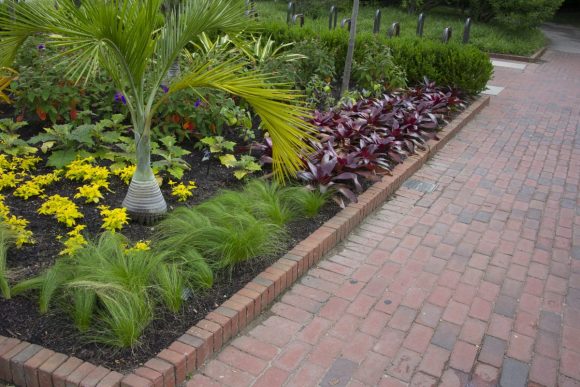
5. Add a touch of tropics
Planting a tropical-themed garden doesn’t require you to use 100 percent tropical plants, said Bunting, but a few plants can have an impact. To create a Brazil-themed garden, do as Burle Marx did: Find plants within your reach. That is, at your local garden center or nursery, find palms or other tropical plants that can be brought inside for the winter. To care for tropical plants, keep in mind they thrive in heat and humidity, and need plenty of moisture. Use supplementary fertilizer to keep them healthy and thriving. And remember, if you want the tropical effect without tropical plants, there are plenty of ways to think creatively by using bold houseplants, annuals, and perennials.
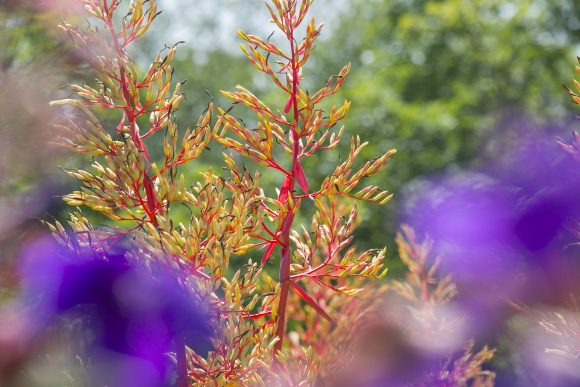
Learn more about the flora and fauna of Brazil in our upcoming conservation talks, held on the following Thursdays from 2 to 3 p.m. in the Linnaeus Room, Regenstein Center.
| AUG 10 |
Birds of Brazil Doug Stotz, senior conservation ecologist, The Field Museum |
| AUG 17 |
A Butterfly Adventure in the Amazon Basin Doug Taron, chief curator of the Chicago Academy of Sciences, Peggy Notebaert Nature Museum |
| SEP 28 |
Plant Diversity and Conservation in Brazil Pat Herendeen, senior director, Systematics and Evolutionary Biology, Chicago Botanic Garden |
| OCT 12 |
Mycological Adventures in Brazil Greg Mueller, chief scientist and Negaunee Foundation Vice President of Science, Chicago Botanic Garden |
Photos by Tia Mitchell Photography
©2017 Chicago Botanic Garden and my.chicagobotanic.org

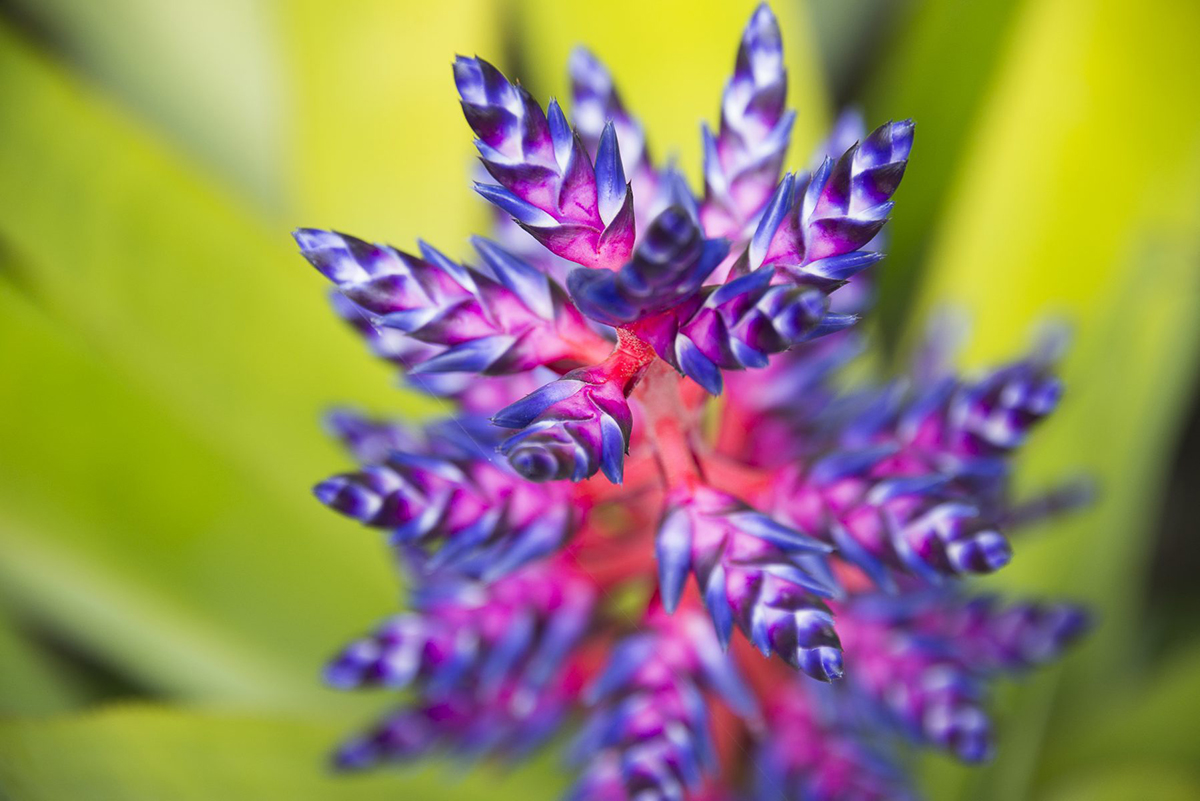
Wonderful ideas and tips. Help me with this: The climates in Chicago and where I live, in Minneapolis, don’t allow for year round gardens with tropical themes. Some smaller plants can be overwintered in the garage or basement, but with limited space it seems that the loss of several plants out weighs the short-lived beauty of Tropical Brazil. Is there a recommendation for extending the life of the gardens in our areas?
Mr. Kelly, we ran your question by our horticulture staff, and got a few different perspectives on the issue.
Senior director of horticulture Tim Johnson notes, “Whether the loss of the plants outweighs the benefits of using tropical for outside displays seems to be more of a personal judgement which will vary widely among gardeners. Some of the plants chosen for the Brazil display were made with the intention they could handle some of the colder weather in early fall to extend their use in an annual display. Some will be saved to use in future displays. Most will stay out until the frost takes them out. Extending the life would mean moving tropical inside on cold days and nights and back out when warm. Covering during cold nights does not seem practical long-term. This arrangement is no different than other annuals we grow for summer, which either get killed by frost (some also look very “tired” by end of the summer) or get replaced with the fall displays. Our intent is to carry some of the Brazil display over into the fall season so we will be planting fewer fall annuals than other years. Remaining plants will be composted after they are killed by frost. We do work to reduce waste and reuse when we can.”
If you are intent on creating a display with a similar feel in the garden with plants that will make it through a Midwestern winter, horticulturist Tom Weaver suggests hardy plants that have a tropical feeling. “There are several Jack-in-the-Pulpit (Arisaema) that are hardy in the Twin Cities (and Chicago) that have a very exotic flowers and leaves. Another of my favorite hardy “jungle” plants is Aralia cordata ‘Sun King’, which gets huge, chartreuse leaves that glow in a shady border. Aralia spinose has enormous, lacy green leaves on tall, unbranched stems that can create an almost palm-like effect. (Though it does eventually form a large clump, the runners are easy to pull to keep the plant in check.) Magnolia tripetala has leaves up to 2′ long and sporadic flowers up to 1′ in diameter, and also has a very tropical jungle feeling, in spite of being able to grow in Minneapolis. The red cone-like fruits are an added bonus. If you’re looking for flowers, hardy hibiscus cannot be beat. They bloom in late summer and come in shades of white, pink, and red, and are available in a wide variety of sizes. Senna hebecarpa is another hardy perennial that I feel has a particularly tropical look to it. It has bright yellow flowers and compound leaves and is native to Illinois (but will also grow in Minnesota).”
Finally, outdoor floriculturist Tim Pollack also briefly recommends the use of cannas, and Colocasia (elephant ears) in the summer garden display. Both are “tropical” in nature, but are widely available as annuals for summer use.